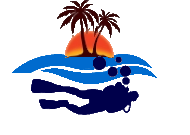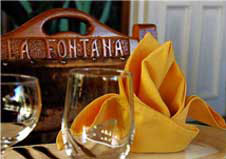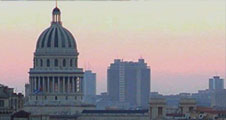Cuban popular music in the 20th Century (1st part)
By: Senén Suárez Hernández | Source: CUBARTE | 08 de October 2009
Cuban music, especially the music of the orchestra, has always been among the most favorite of the world. It´s been always well known, admired and applauded by the people. It has been alive in people´s minds and souls for over a century.
Our music does not escape to the inseparable composer-singer binomio. That makes us remember the 1800´s, exactly 1879, when the trumpet player originally from Matanzas province, Miguel Failde, launched to the world his first danzon (1), which was a milestone within the history of Cuban popular music. The title was “Las Alturas de Simpson”, a big event that was the background of our popular dance music.
Henceforth there was a big avalanche of danzon orquestas tipicas. They were based on wind instruments, supported by the guiro (2) and the timbal (3), following the parameters of the cinquillo (4), which was later on called Cuban cinquillo.
These orchestras suffered many changes along the time, and orchestras for piano, violin, double bass and a five key flute were created, which were called French Charanga Orchestra; Antonio Maria Romeu, (Jibacoa, 1876- Havana, 1955). This latter was a great example of a danzon orchetra follower; it starts with the typical format of the danzon and finishes with the French Charanga.
Following the composer-interpreter route, we will make reference to some danzon orchestras and its most outstanding figures, with the certainty that if we happen to omit something it´s totally unintentional:
Antonio Maria Romeu, with his so admired Francisco Delabart, (Panchito Flauta Magica -Magic Flute-); the Lopez family, Coralia, Orestes, Orlando, Jesus, Israel; Antonio Sanchez (musiquita); Belisario Lopez; Miguel O´Farril; Enrique Jorrin; Richard Egues; Abelardito Valdes; Antonio Arcano; Joseito Valdes; Paulina Alvares, among others...
A musical form of the danzon was, without a doubt, the danzonete.
The danzonete was created by Aniceto Diaz (Matanzas, 1887- Havana, 1964), in 1929. This musical form was the result of the boom of the Cuban Son during those years.
The real purpose consisted in inserting a vocalist in the charangas (5). Some of the most relevant were: Cheo Belen Puig with Pablo Quevedo, Joseito Fernandez and his orchestra, Paulina Alvarez and her orchestra, etc...
Another musical form of the danzon was the Cha Cha Cha (6), created by Enrique Jorrin and Ninon Mondejar from 1951 on. Here the charangas became very popular. Among the ones we could mention are: the “Charanga America”, “Melodias del Cuarenta”, “Siglo XX”, “Sensacion”, “Aragon”, “Neno Gonzalez”, “La Sublime”, and others. Many of these orchestras already existed, but the Cha Cha Cha rhythm made them popular and modern.
The Son (7)
Since the 1920
I´ve been playing my lyre
Struggling with the soneros (8)
None have made me anythin´.
It was in Guantanamo
Where I shook up
Someone named Pepe Luis
He trully sounded so good
I was very quiet
The time I was there.
That was the way Felipe Neri Cabrera used to sing, accompanied by his close colleagues from Havana´s Septet: Gerardo Martinez, Carlos Godines and Guillermo Castillo.
From these years were also Alfredo Bolona and Ignacio Pineiro, together with other big musicians who stood out in the first decades of the 20th Century.
It was logical that this incipient musical movement born in the Eastern Cuban region and developed all along our country, had its own rhythm and dance styles.
It is not so easy to create it, but it is worth while and meritorious to be a follower.
We can think, beyond any doubt, that creating is a natural gift which, though we could not be theorically absolute, this time, it is worth to be it a little bit.
Lyre was the name given by the old trobadours to the guitar, based on what the dictionaries said on it “...being impressed by all your charms, my lyre was stirred and my inspiration too...” (Manuel Corona) (9).
The Son, as we had already explained before, was born in the Eastern Cuban region. It was very accepted by all, except by the bourgeoisie, who always tried to crush it and put reins on it. But, even though, it couldn´t hide or avoid its acceptance by all Cubans, or the support that it received from the Cuban provinces and big musicians all along Cuba.
The Son arrived to stay in Cuba, and it won´t ever leave us.
At the very beginning, the Son was played by craft instruments based on bogoes, maracas, claves, bass or marimas, tres, cowbell or idiophone, voices and guitar.
In 1922, an important event in our country took place: the radio. This was so good for the musical groups, since the radio lacked of budget to keep paying the orchestras, the ensembles, the trios and others. This union of both was of mutual benefit, because this way they made know the groups that the radio station promoted, as well as the station as such.
By the end of the nineteen-twenties, the sextets added a trumpet player and became septepts, leading way to different septet orchestras like the Jazz Band, Danzonera and other string groups.
With the creation of the radio, several musicians and groups joined, such as the case of the National Septet, which was first named “Occidente”, leaded by Maria Teresa Vera; the Havana´s Septet; “Jovenes del Cayo” with Miguelito Valdes; “Niagara”; Alfredo Bolona, who became a Bolero singer and, at the beginning of the nineteen-thirties arouse “Charanga Gris”; “Hermanos Contreras” and other greater orchestras of Jazz Band kind, like “Hermanos Palau”, “Lebatard”; “Hermanos Castro”, and “Casino de la Playa.”
During the nineteen-thirties the septet integrated by the Castro´s Sisters, having the name of “Anacaona” was created, which, some years later became a jazz band.
It is important to mention the arrival of Antonio Machin in Havana, who was lucky to work with “Don Aspiazu”´s Orchestra to travel to New York.
After having finished his contract with Aspiazu, Machin separated from him and travelled to England, Paris and Spain. He remained in Spain where he developed a bright career, as a promoter of the Cuban music.
The “Maravillas del Siglo” orchestra was founded in 1936, integrated by a group of excellent musicians who were conducted by the unsuccessful singer, Fernando Collazo. Some time after, it became “Antonio Arcano y sus Maravillas”, keeping the orchestra format.
1930 was a year of a big musical effervescene in Havana. An important figure for the development of the Cuban Son showed up. His name was Arsenio Rodriguez Scull, born in Guira de Macurije (Matanzas, 1911- Los Angeles, 1972).
Arsenio played in several groups, either in Guines or in Havana.
At the beginning of the nineteen-forties he created his own group, to which he added three trumpet players, piano and tumbler, something that other groups had already experienced; but in the case of Arsenio, it was definitive.
This group was a big success in and outside our country.
By this time, important events took place in our country: like the creation of several radio stations such as the CMQ, located in Monte and Prado streets, Old Havana; Radio Cadena Suaritos, located in Vedado district; Mil Diez, located in Reina street, and RHC Cadena Azul, located in Prado and Carcel streets, Old Havana.
We may affirm that there were over forty radio stations in Havana, but the station with the largest audience by this time was CMQ.
CMQ had an exceptional cast and programs like radio soap-operas, humorist programs, musical and information sections.
Among the most favorite programs we could mention were: “Orquesta Casino de la Playa” with Miguelito Valdez and the news event of the day with Joseito Fernandez and his “Guantanamera”. Each night it broadcasted “La Corte Suprema del Arte” and amateurs´ programs.
The “Suaritos” Radio Station had an orchestra conducted by Obdulio Morales, who accompanied important musicians from that time like Panchito Rizet, Maria Teresa Vera, Mercedita Valdes, Amelia Frades, Celina y Reutilio, among others.
Two weird facts happened in that station. The first one was the fact of having only one announcer (the owner of the radio station), Laureano Suarez, and the second that on Sundays they broadcasted motion pictures spoken in Spanish.
Mil Diez, the radio station of the Communist Party, kept a good audience, even though it had a low-budget. It had a prime class announcers´ staff, among whom were Hector D´Soto, Manolo Ortega, Ibrahin Urbino and others.
On May 20, 1939, RHC Cadena Azul was founded, directed by Amado Trinidad Velasco; a big event within the history of Cuban radio.
This radio station started an artistic war consisting in looking for talents of any kind, against all the Havana´s radio stations and, especially, against CMQ, by promising its staff better wages.
This was the beginnings of RHC, which started to work with famous musicians, drama artists and humorists like Chano Pozo, Nico Saquito, “Camacho” ensemble, “Casino” ensemble, “Habana Casino” ensemble conducted by the maestro Leonardo Timor, the Radiunda and Raul Lima Duet, Celina and Reutilio Duet, as well as a group of artists acting in radio soap-operas, and a many other foreign artists who were exclusively hired by this radio station.
But, since that all that began bad, ended bad, due to lack of control as regards to management, the peasant Amado Trinidad Velasco, who arrived in Havana with a huge capital, finished bankrupt and suicided.
To sum up, since old times, the Cuban dance music and radio got along well as good sibblings.
It is also fair to make reference to other musical rhythms that came after this, but we will continue talking about that in coming articles.
(To be continued...)
Acknowledgements:
Manuel Villa Fernandez, Musical Reasearcher
José Galiño, Historian and Musical Researcher
Bac. Belinda de la Caridad Suarez Pepsi
Bac. Roberto Payeras Garcia
Notes:
(1) Developed in the second half of the 19th Century, it became the official dance of Cuba. It evolved from another musical rhythm called contradanza, having an English origin. It was influenced by African rhytmic and dance styles, and so became a genuine fusion of European and African influences.
(2) A percussion instrument.
(3) A sort of drum, of Cuban origin, used in popular dance music.
(4) In music, cinquillo is a special assessment team consisting of five figures which may amount to six or four of the same species.
(5) A term given to traditional ensembles of Cuban dance music. It
made Cuban dance music popular in the 1940s and the music consisted of heavily son-influenced material, performed by European instruments such as violin and flute by a Charanga orchestra.
(6) Another Cuban dance music genre.
(7) A Cuban musical style, of Afro-Caribbean origin.
(8) Son´s players.
(9) Manuel Corona Raimundo (June 17, 1880- Las Villas, Marianao, Havana, 1950), an outstanding Cuban composer and guitar player. He´s well-known by his songs: “Longina”, “Santa Cecilia”, “La Alfonsa”, and “Aurora”. He also worked other popular musical forms, like the guarachas: “El Servicio Obligatorio” and “Como esta Lola.”
Translation: Roxana Marquez Herrera (Cubarte)























